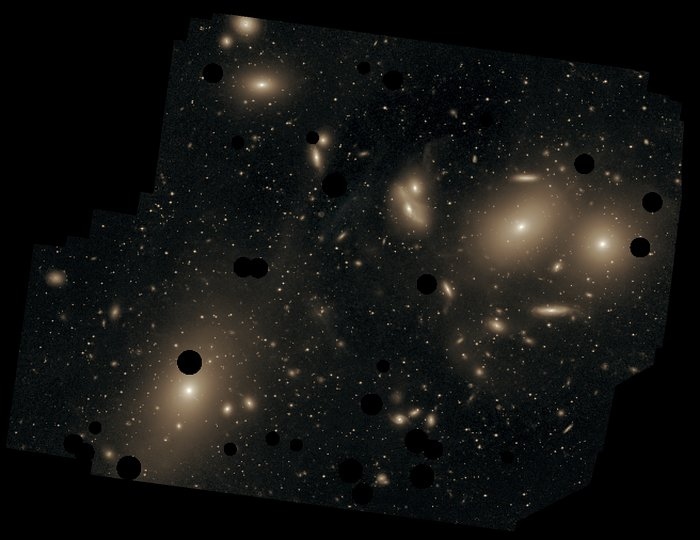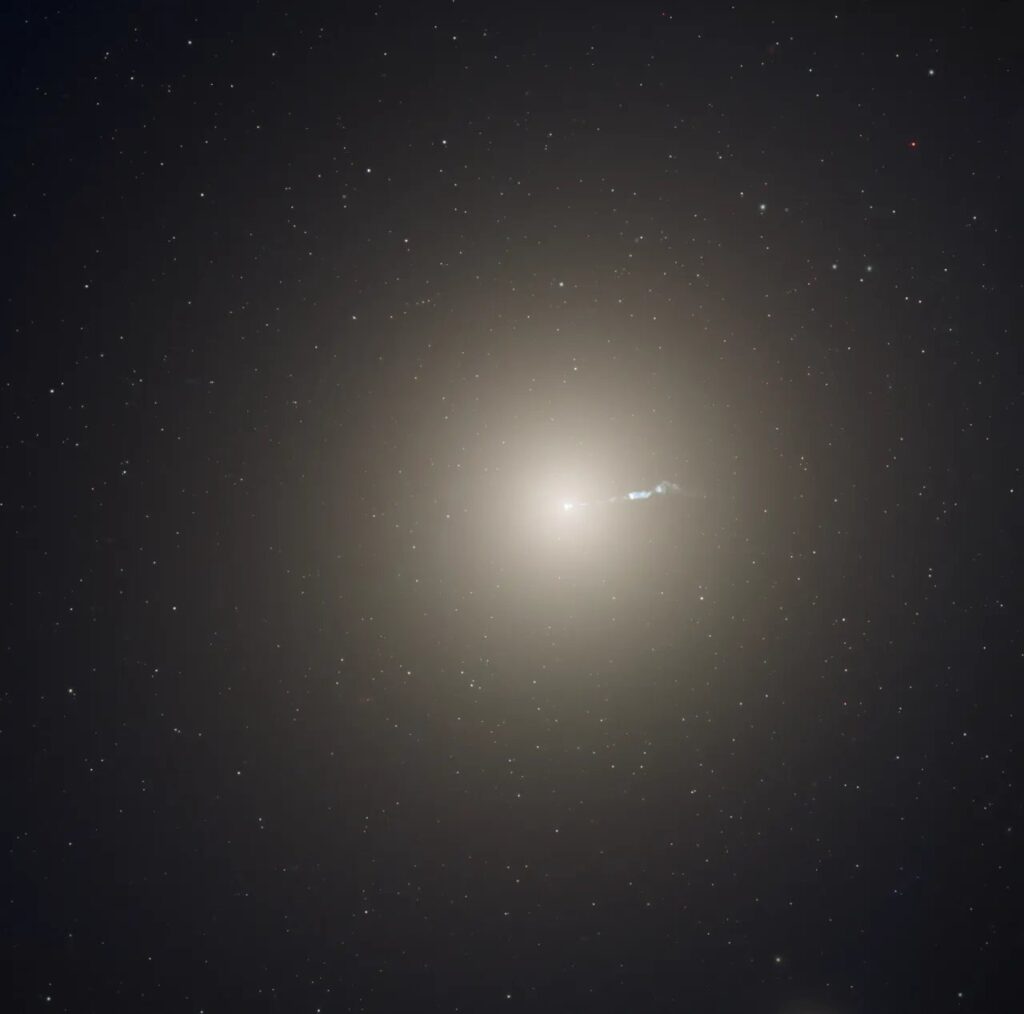Messier 87 (M87) is a giant elliptical galaxy located in the constellation Virgo. It was discovered by the French astronomer Charles Messier in 1781 and is one of the largest and most massive galaxies in the nearby universe. M87 is situated at a distance of about 53 million light-years from Earth and is a prominent member of the Virgo Cluster, a rich cluster of galaxies that contains thousands of members. Here are some interesting facts:
Structure and Composition
As an elliptical galaxy, M87 lacks the spiral arms seen in spiral galaxies like the Milky Way. Instead, it has a smooth and featureless appearance, with a central bulge surrounded by a halo of stars. Elliptical galaxies are typically composed of older stellar populations, with little ongoing star formation compared to spiral galaxies. M87 is no exception, although it does contain some regions of active star formation in its outer regions.
One of the most striking features of M87 is its massive central supermassive black hole, which has a mass billions of times that of the Sun. This black hole is one of the largest known in the universe and is surrounded by a hot, rapidly rotating disk of gas and dust. The intense gravitational pull of the black hole also gives rise to a powerful jet of high-energy particles and radiation that extends for thousands of light-years into space.
The jet emitted by M87’s central black hole is a prominent feature that can be observed across the electromagnetic spectrum, from radio waves to X-rays. The jet itself extends over 5,000 light-years from the galaxy’s core. This jet is powered by the infall of matter into the black hole’s accretion disk and is one of the most energetic phenomena in the universe. Studying the jet and its interaction with the surrounding interstellar medium provides valuable insights into the physics of black holes and the processes occurring in the cores of galaxies.

Other Features
M87 is also home to a large population of globular clusters, which are dense collections of stars orbiting the galaxy’s core. These globular clusters are thought to have formed during the early stages of M87’s evolution and can provide valuable insights into the galaxy’s formation history and dynamics. The exact number of globular clusters associated with M87 is still a subject of ongoing research.
Observations of the galaxy have revealed that it is surrounded by an extensive halo of hot gas. This gas, which extends far beyond the visible boundaries of the galaxy, is heated to temperatures of millions of degrees Celsius. The origin and properties of this hot gas halo are of great interest to astronomers, as they can shed light on the processes governing galaxy formation and the exchange of material between galaxies and their surroundings.
Observation
With an apparent magnitude of approximately 9.6, M87 is faintly visible to amateur astronomers using small telescopes under dark sky conditions. It appears as a fuzzy, round patch of light in the eyepiece, with its distinctive elliptical shape becoming apparent when viewed with higher magnification.
Since M87 is located in the constellation Virgo, which lies along the ecliptic plane, it is most easily visible during spring in the Northern Hemisphere and just visible at higher latitudes during autumn in the Southern Hemisphere (March to May),
Keep in mind that the visibility of M87 also depends on factors such as light pollution, weather conditions, and the Moon’s phase. For the clearest views, try to observe from a dark location away from city lights and when the Moon is not too bright. Additionally, using a telescope with a large aperature will enhance your ability to see M87 and its features.




